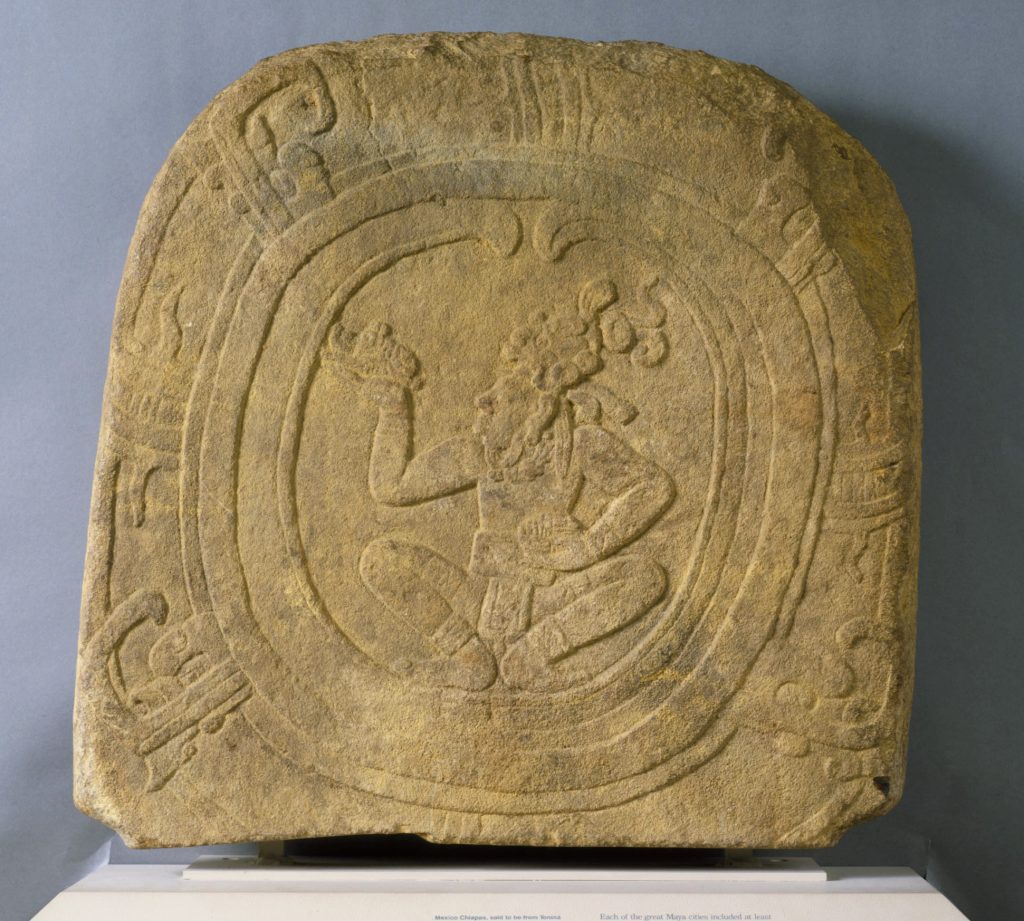Ballcourt Marker (work of art)
Artwork Info
About
Key Ideas about this Work of Art
- One of the earliest-known sports that involved the use of a ball was a game played by the Maya people (circa 550 to 850).
- A ballcourt marker would have been placed in the ballcourt’s long, narrow alleyway, as part of the game.
- This ballcourt marker is created in bas-relief, which means the carvings stand out slightly from the background surface. The focal point of this piece is the human figure at the center, who is surrounded by a quatrefoil design containing glyphs (symbols). A quatrefoil design has four partially overlapping circles that are the same size.
- This piece is in good condition. However, the back shows evidence of having been cut with a saw. It was most likely removed by force by the looters who stole the artwork and damaged one of its corners.
Learn More
This ballcourt marker is an object that would have been placed in the playing alley, in the Mesoamerican ballgame. It features fine reliefs, which are detailed carvings that stand out from the surface. The human figure in the center of the marker is wearing a helmet depicting a jaguar’s head and the Sun God K’inich. The flower expelling smoke above the helmet represents its warm nature. The figure’s garments indicate that he is a ballgame player, and he is wearing a ceremonial yoke around his waist. He is holding the head of the Jester God in his right hand and a rubber ball in his left hand. In Maya art, a rubber ball is represented by the lines within the ball shape. The squatting posture of this figure is unusual in Lowland Maya art. Most human figures in works of art from this region were depicted standing, kneeling, or sitting. This ballcourt marker could have come from the Chiapas highlands, probably Tenam Puente or Toniná.
tags: play, ceremony, ball, court
Additional Resources
Resources for Teachers
- Read an essay on the Maya ballgame from The Metropolitan Museum of Art.
- Read a case study on the looting of a Maya ballcourt.
- Read an article about the Chiapas highlands ballcourt markers.
Resources for Students
- Watch this animated clip of the ballgame being played.
- View images of a playing alley where a ballcourt marker would be placed.
- Watch a video that explains how an ancient Mayan legend inspired the ballgame.

